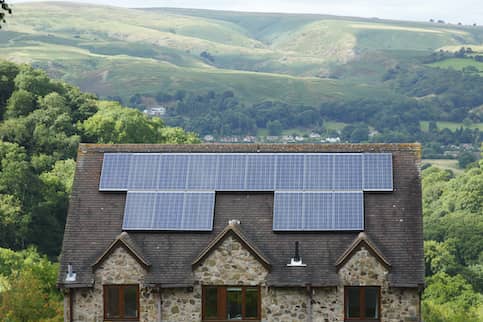There’s a lot to consider when you’re looking for a new city to call home. On one hand, there’s no denying the magnetism that draws us to large cities, not to mention their amenities, convenient public transportation, and better job opportunities.
But you also must consider the cost, and there’s no doubt that some of the most popular major cities in the U.S. also come with some of the highest price tags for just about everything from rent and houses to groceries and gas.
Have you ever wondered how much it would cost to call one of these cities your home? If so, you’re in luck – we’ve done the research for you! After scouring and analyzing the data, we’ve gathered a list of the 15 most expensive cities in the U.S. to help you determine if city life is really for you.
What Is The Average Cost Of Living In The US?
To understand our findings, you must have a better sense of how the city-level statistics compare to the national average.
Cost of living refers to the amount of money required to pay for basic living expenses. The cost of living for different locations can vary dramatically. The following figures provide a snapshot of our country’s cost of living as a whole:
- Median household income: $70,784
- Average home price: $452,510
- Average monthly rent: $1,369
- Unemployment rate: 3.5%
- Poverty rate: 11.6%
- Cost of a gallon of milk: $2.43
The data above was pulled from various sources, including the U.S. Census Bureau, the Bureau of Labor and Statistics and The Council For Community and Economic Research’s Cost of Living index.
To find out the cost of living in your area and how it compares to the national average and the cities on our list, visit our cost of living calculator. To use this calculator, simply input your current home city and the city you want to live in and you’ll see the difference in the cost of living and how much you would need to earn to live in the new city.
See What You Qualify For
Buy A Home
Discover mortgage options that fit your unique financial needs.

Refinance
Refinance your mortgage to have more money for what matters.
Tap Into Equity
Use your home’s equity and unlock cash to achieve your goals.
The 15 Most Expensive US Cities In 2023
When rounding up our list of the 15 most expensive cities in the U.S., we ranked them based on how much of a percent the overall cost of living was above the U.S. average.
Keep in mind that the cost of living is just one part of how affordable a place is to each person. Salary is another. The area’s cost of living may be considered when companies set salaries – or employees negotiate their pay. A job in New York City might pay considerably more than a similar job in the Midwest.
1. Manhattan, New York
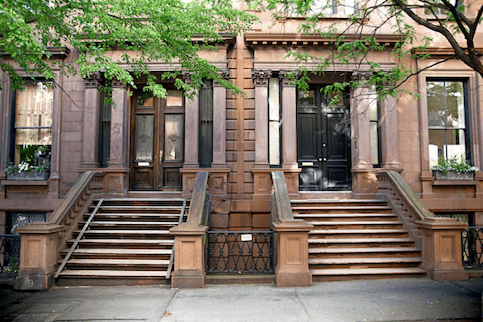
- Overall cost of living: 127.7% above U.S. average
- Median household income: $70,663
- Average home price: $2,434,977
- Average monthly rent: $4,569
- Unemployment rate: 4.3%
- Poverty rate: 17%
- Cost of a half-gallon of milk: $3.04
In the 19th century, immigrants flocked to Manhattan, galvanized by the mistaken belief that the streets were paved with gold.
Today, the city still attracts swarms of residents (more than 70,000 residents per square mile) who dream of making it big but find that their relatively modest salaries fail to offset the Big Apple’s extravagant living expenses. Manhattan’s median household income is on par with the national average, yet the cost of living is way over it.
While everything in this borough is pricey, it’s the housing market that really makes Manhattan prices crippling for individuals. The purchase price of homes in Manhattan is more than five times what the average American pays.
2. Honolulu, Hawaii

- Overall cost of living: 84% above U.S. average
- Median household income: $92,600
- Average home price: $1,605,915
- Average monthly rent: $3,589
- Unemployment rate: 3.8%
- Poverty rate: 10%
- Cost of a half-gallon of milk: $4.32
Honolulu may seem like a dream with its laid-back lifestyle and incomparable beaches, but its prices are more like a nightmare. A half-gallon of milk costs nearly twice the national average.
Although Hawaii is working to increase the amount of food produced in-state, groceries in the state are still some of the most expensive in the country because most food items still need to be shipped or flown into the area. Much of the food imported spoils before reaching the consumer, so waste coupled with the electricity costs required to keep food fresh are driving up the prices even further. These factors mean Honolulu is the second-most expensive city in the country for groceries, second only to Kodiak, Alaska.
Meanwhile, residents pay nearly two times the cost for electricity than the average American. Although rents are high, purchase prices for homes are what make Honolulu housing so expensive.
The average home price is almost $1.2 million dollars more than the national average due to the fact that Honolulu has low inventory and little new construction.
3. San Francisco, California
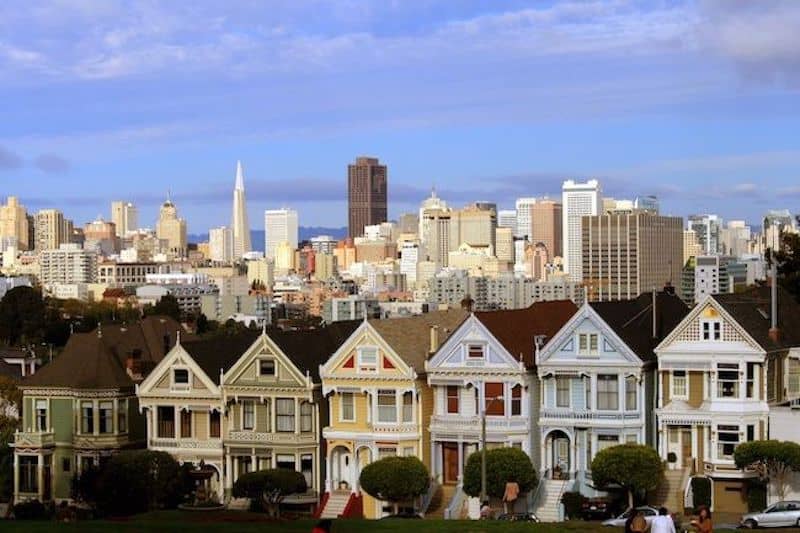
- Overall cost of living: 78.6% above U.S. average
- Median household income: $126,187
- Average home price: $1,502,557
- Average monthly rent: $3,585
- Unemployment rate: 2.8%
- Poverty rate: 10.3%
- Cost of a half-gallon of milk: $3.38
San Franciscans may have unusually high salaries, but they also have exorbitant living costs.
Yet, both the poverty and unemployment rates in San Francisco are lower than the national average due to the strength of the city’s industries – specifically tourism, technology and financial services. As the 415 has evolved into a tech hub, high-paid software engineers have moved in, driving up housing prices considerably.
Now, the average home price in the city is more than three times the national average while the average monthly rent is more than double. And since San Francisco is surrounded by water, the city can only build up – not out.
The issue is exacerbated by zoning laws that restrict building heights to 40 feet in most districts. So as the housing supply has struggled to keep up with increased demand, many residents have been priced out and forced to flee the city in search of cheaper pastures.
4. Brooklyn, New York
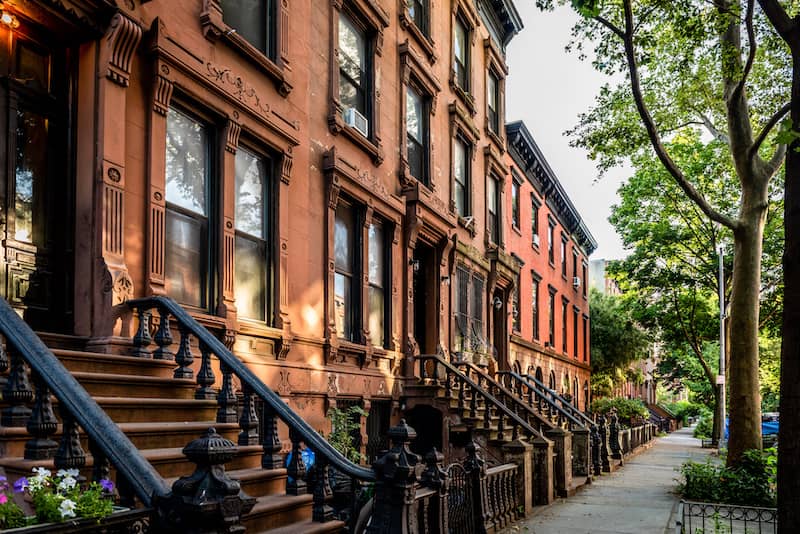
- Overall cost of living: 68.6% above U.S. average
- Median household income: $70,663
- Average home price: $1,349,755
- Average monthly rent: $3,727
- Unemployment rate: 4.3%
- Poverty rate: 17%
- Cost of a half-gallon of milk: $2.88
When the Dodgers left Brooklyn in 1957, it seemed like the end for the New York borough. Manufacturers moved out of the city, the Navy Yard closed and the streets became overridden by poverty and crime.
But as the city entered the new millennium, devastated, industrial warehouses were redeveloped into luxury lofts with exposed brick, floor-to-ceiling windows and spectacular views of the Manhattan skyline. Gradually, Manhattanites began flocking to this outer borough in search of more affordable housing.
Two decades later, the average home price in Brooklyn is now almost three times the national average. Meanwhile, despite the city’s outrageous housing costs, residents make about the same as the average American.
5. Washington, D.C.
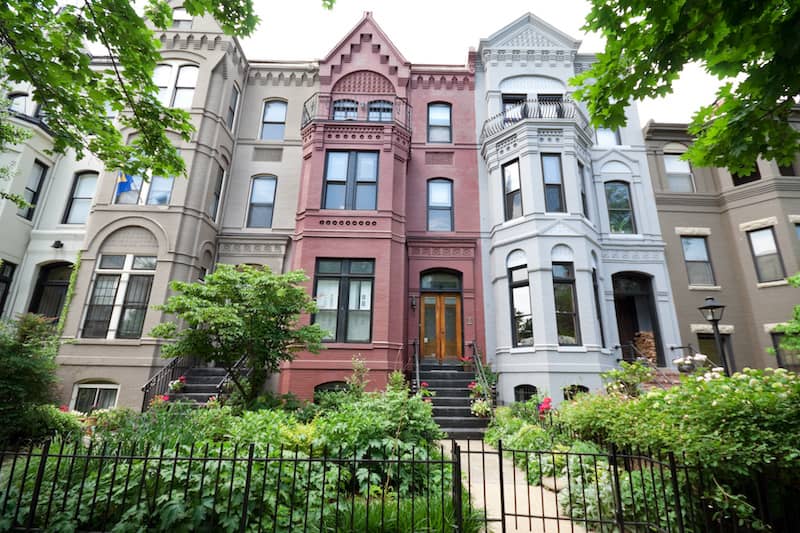
- Overall cost of living: 52.2% above U.S. average
- Median household income: $93,547
- Average home price: $1,156,418
- Average monthly rent: $3,220
- Unemployment rate: 4.7%
- Poverty rate: 16.8%
- Cost of a half-gallon of milk: $2.91
Although many working in the nation’s capital used to retreat to the suburbs at the end of the day, Washington, D.C. has become a vibrant city with many full-time residents. The city’s population has grown by over 100,000 people in less than a decade.
With an abundance of jobs in the government and private sector, D.C. attracts a younger crowd of hardworking individuals. Currently, the median age of D.C.’s residents is about 34. But as new eager residents continue to arrive in the city, the housing supply has struggled to keep up due to restrictions on building heights.
Following a law passed by Congress in 1910, the heights of new developments may not exceed 20 feet more than the width of the street in front of it. Because D.C.’s buildings are restricted to roughly 11 stories, housing costs are high: The average home price in the city is several hundred thousand dollars higher than the national average, while median rents are also higher.
Take the first step to buy a home.
Quicken Loans® lets you get to house hunting sooner.
6. Orange County, California

- Overall cost of living: 51.2% above U.S. average
- Median household income: $100,485
- Average home price: $1,248,882
- Average monthly rent: $2,919
- Unemployment rate: 3.0%
- Poverty rate: 9.9%
- Cost of a half-gallon of milk: $2.76
Another Southern California favorite, Orange County hosts 42 miles of beaches and 39,000 acres of parks within its 948 square miles. Situated between Los Angeles and San Diego, this sprawling metropolitan area is less crowded and has less traffic than its bordering cities.
Similar to LA, Orange County is a patchwork of many cities that each possess their own particular vibe. Among the various communities are Laguna Beach (an artsy village), Newport Beach (a wealthier enclave), Anaheim (the home of Disneyland), Irvine (a business district) and Huntington Beach (a free-spirited surfing destination).
Orange County residents take advantage of their sunny climate by spending their time outdoors, hiking along wooden, coastal and mountainous trails or surfing in one of the area’s plentiful beaches.
Residents’ total energy costs are lower than the national average, but this is little consolation for the O.C.’s steep housing prices. The average home price in Orange County is more than double the national average, costing residents roughly $796,000 more than the average American.
7. Los Angeles, California

- Overall cost of living: 50.6% above U.S. average
- Median household income: $69,778
- Average home price: $1,098,874
- Average monthly rent: $3,182
- Unemployment rate: 4.4%
- Poverty rate: 16.6%
- Cost of a half-gallon of milk: $2.76
Though recognized across the globe as the home of Hollywood and Beverly Hills, Los Angeles has many eclectic offerings as the second-largest city in the U.S. It comprises numerous diverse neighborhoods that tout unique personalities ranging from ritzy to bohemian.
While the various regions of the city present different lifestyles – urban, suburban and beachy – residents tend to find housing close to where they work since commuting in the city can be a struggle.
Historically, Los Angeles has been criticized for its poor public transportation and notorious traffic. The average gallon of gas costs residents $5.45, which is about $1.68 more than the national average.
But what’s really eye-opening is the fact that Los Angeles’s median household income is about $1,000 less than the national average, while average home prices and rents are approximately 2.4 and 2.3 times higher. This extreme discrepancy helps explain why the city’s poverty rate is much higher than the nation’s.
8. Seattle, Washington
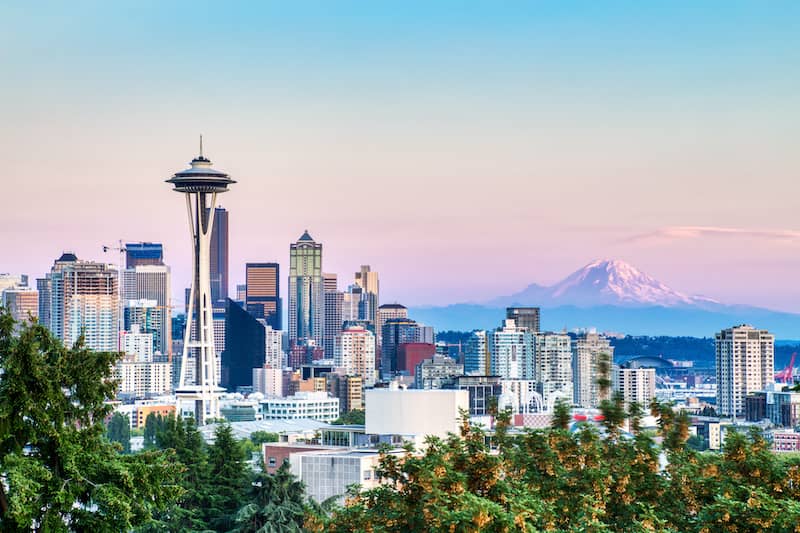
- Overall cost of living: 49.9% above U.S. average
- Median household income: $105,391
- Average home price: $940,665
- Average monthly rent: $3,031
- Unemployment rate: 3.4%
- Poverty rate: 10%
- Cost of a half-gallon of milk: $2.97
Surrounded by water and majestic mountain ranges, Seattle is one of the fastest-growing cities in the nation thanks to Amazon (and to a lesser degree, Microsoft, which is headquartered in nearby Redmond).
Since Amazon put down roots in the city just over a decade ago, Seattle has seen a huge shift in its local economy. Wages increased by almost $21,000 on average while the unemployment rate dropped by 5.7%.
With over 100,000 new residents in Seattle, the housing supply has struggled to keep up despite an explosion of new construction. Given the high demand, housing prices have soared. Currently, Seattle’s average monthly rent is approximately 2.2 times the national average.
Average home prices have seen a similar change, being double the national average.
9. Boston, Massachusetts
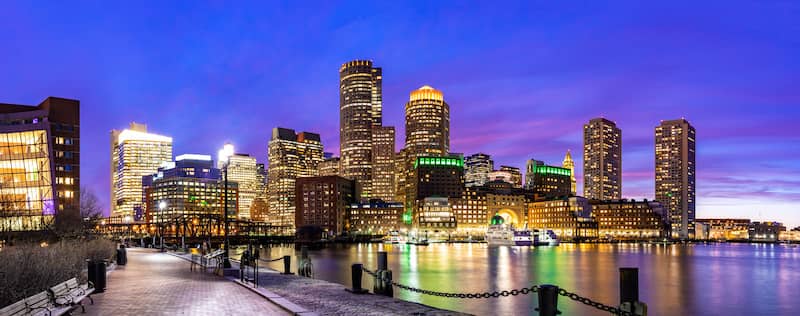
- Overall cost of living: 49.7% above U.S. average
- Median household income: $81,744
- Average home price: $921,897
- Average monthly rent: $3,747
- Unemployment rate: 2.7%
- Poverty rate: 17.6%
- Cost of a half-gallon of milk: $3.13
Known for its historical roots, world-class universities and often-parodied accent, Boston is a lively city filled with colorful characters. For Boston, sports are more than just a pastime. The city is filled with avid fans who have nicknamed it “Titletown” due to the repeated success of its many major professional leagues.
Boston is also a seafood lover’s dream, serving some of the freshest clams, oysters and lobsters in the country. The weather may be mild in the summer, but snowstorms can be plentiful come winter.
Although it is a highly walkable city and has convenient access to trains and buses, gridlock is a growing problem for Boston. While average home prices in Boston are two times the national average, they’re on the more reasonable side compared to other major U.S. cities.
That said, the average monthly rent in the city is on the higher end, being more than double what average Americans pay.
10. Oakland, California

- Overall cost of living: 45.9% above U.S. average
- Median household income: $85,628
- Average home price: $909,739
- Average monthly rent: $2,753
- Unemployment rate: 3.2%
- Poverty rate: 13.5%
- Cost of a half-gallon of milk: $3.33
Just across the bay from San Francisco, Oakland has become a popular city for creative types and young professionals who’ve been priced out of the 415.
And while San Francisco is a short commute away via the Bay Area Rapid Transit (BART), Oakland is in no way lacking when it comes to job opportunities. The city is home to a number of large corporations including Kaiser Permanente, Sutter Health, Southwest Airlines and Pandora.
Oakland is a socially and environmentally conscious community that encourages residents to think locally by promoting small businesses, sustainability efforts and urban farming.
Although Oakland has been a refuge for artists in the Bay Area, rising housing costs have caused local artists to fear that they’ll soon be pushed out. These concerns are not unfounded: Oakland’s median household income is just shy of $15,000 more than the national average, but residents pay twice as much as other Americans to buy homes.
11. San Diego, California
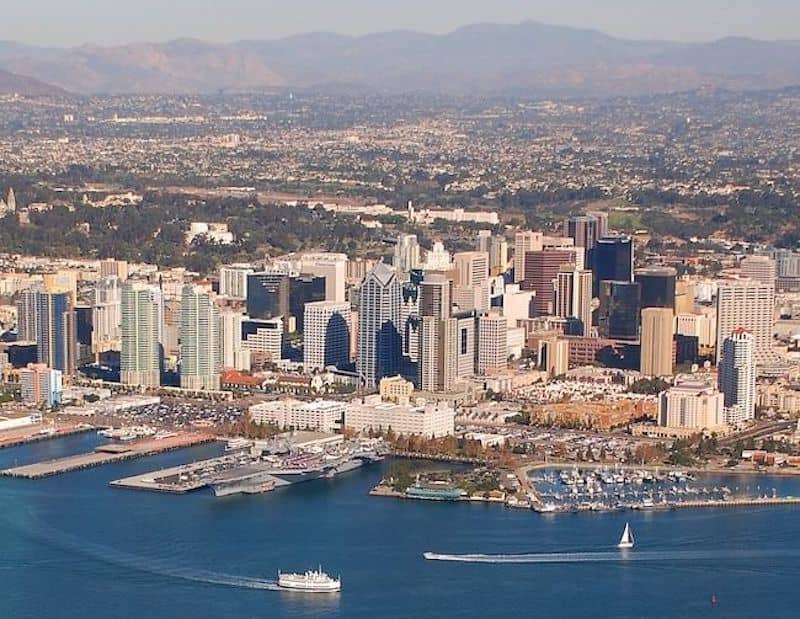
- Overall cost of living: 43.7% above U.S. average
- Median household income: $89,457
- Average home price: $1,001,748
- Average monthly rent: $3,057
- Unemployment rate: 3.3%
- Poverty rate: 11.6%
- Cost of a half-gallon of milk: $2.70
Sandy beaches and sunny skies lead many to view San Diego as an idyllic place to live. The city’s position on the coast provides residents with a gentle breeze that keeps the city cool enough to enjoy year-round.
Residents lead a more laid-back lifestyle, spending their days in T-shirts and flip-flops. Free afternoons are spent surfing, hiking and visiting the famous San Diego Zoo, but when night rolls around, San Diegans take advantage of the city’s robust restaurant and craft beer scene.
Many take jobs with the city’s two largest employers, the United States Navy and the University of California, San Diego. While the city has a trolley system, trains and buses, very few residents actually use public transportation. The city is vast and far more accessible by car, but residents’ reliance on vehicles makes parking in the city a nightmare. And residents’ utility bills can come as a shock, being more than 12.5% the national average.
Although many residents find budgeting more difficult in San Diego, they cheerfully refer to the high cost of living as the “sunshine tax.”
12. Queens, New York
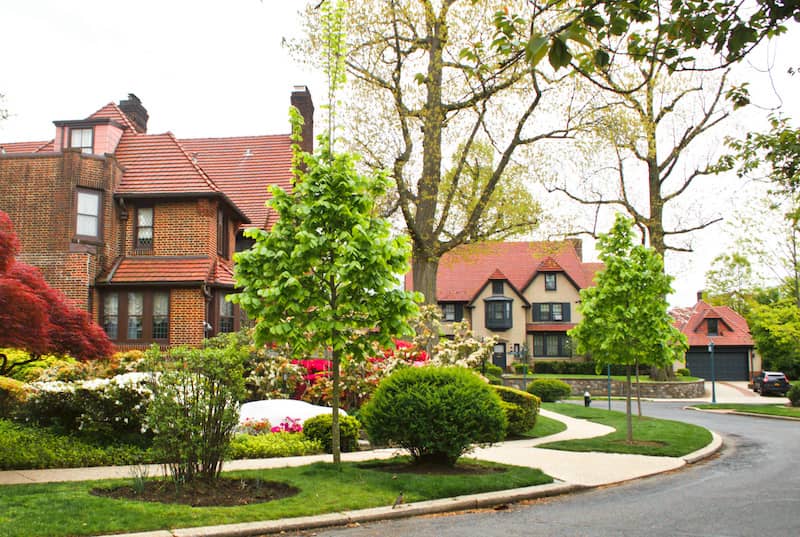
- Overall cost of living: 42.2% above U.S. average
- Median household income: $75,886
- Average home price: $926,306
- Average monthly rent: $2,969
- Unemployment rate: 4.3%
- Poverty rate: 13.6%
- Cost of a half-gallon of milk: $3.06
Although it’s the largest of New York’s five boroughs, Queens doesn’t have the glitz or glamor of its better-known neighbors.
As the populations of Manhattan and Brooklyn have become increasingly dense and the cost of living exorbitant, more residents have turned to Queens in search of affordable accommodations. The city is very diverse and has a large population of immigrants, but it’s begun to gentrify due to renewed interest.
Neighborhoods like Astoria and Forest Hills provide a quieter, more suburban style of living for individuals who spend 45 minutes to an hour on the subway commuting into Manhattan. Long Island City, a neighborhood which is slightly closer to Manhattan, has a big-city feel as it’s populated by luxury high-rises, upscale restaurants, craft breweries and art galleries that overlook the Manhattan skyline.
In Queens, the median household income is $5,102 above the national average, but average home prices are also greater than the national average by $473,796.
13. Arlington, Virginia

- Overall cost of living: 40.7% above U.S. average
- Median household income: $128,145
- Average home price: $1,057,001
- Average monthly rent: $2,568
- Unemployment rate: 3.1%
- Poverty rate: 6.5%
- Cost of a half-gallon of milk: $2.67
Situated across the Potomac River from Washington, D.C., Arlington is another city favored by those who commute into the nation’s capital for work.
While it’s only a few miles away from D.C., it can still take residents around 45 minutes to get there via public transportation. Yet, there are plenty of job opportunities in Arlington for residents to take advantage of, particularly for those interested in working for the government.
Arlington residents place a significant emphasis on education and, in recent years, its county has decided to dedicate more tax revenue to grow their school system. Because of the excellent resources, rigorous academics, high test scores and low student-to-teacher ratios, Arlington public schools are among the best in the country.
Residents of Arlington are not only highly educated but also very affluent. Arlington’s high median household income is almost two times the national average.
14. Bethesda, Maryland
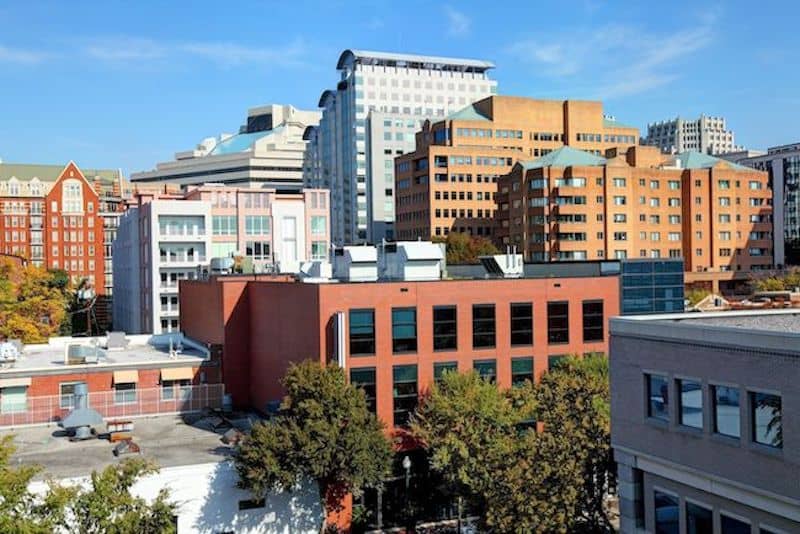
- Overall cost of living: 39.7% above U.S. average
- Median household income: $178,370
- Average home price: $1,016,715
- Average monthly rent: $2,824
- Unemployment rate: 3.1%
- Poverty rate: 3.8%
- Cost of a half-gallon of milk: $2.69
Although Bethesda may be small – the entire city is only 13.2 square miles – it has a lot to offer its residents. Despite its proximity to Washington, D.C., which is about half an hour away by Metro, Bethesda has enough restaurants, shops and entertainment venues to keep people busy. Bethesda is car-friendly, but the city is walkable and has access to convenient public transportation, making cars unnecessary.
While there are many residents who choose to commute to D.C. for work, there are plenty of job opportunities available in Bethesda. The city is home to Lockheed Martin and Marriott International, which are both Fortune 500 companies.
Bethesda is a community of highly educated, socially conscious individuals. According to the U.S. Census Bureau, 87.9% of residents hold a bachelor’s degree or higher. Despite being one of the most expensive cities in the U.S., Bethesda’s median household income is among the highest in the country. Residents earn more than 2.5 times the national average.
15. Alexandria, Virginia
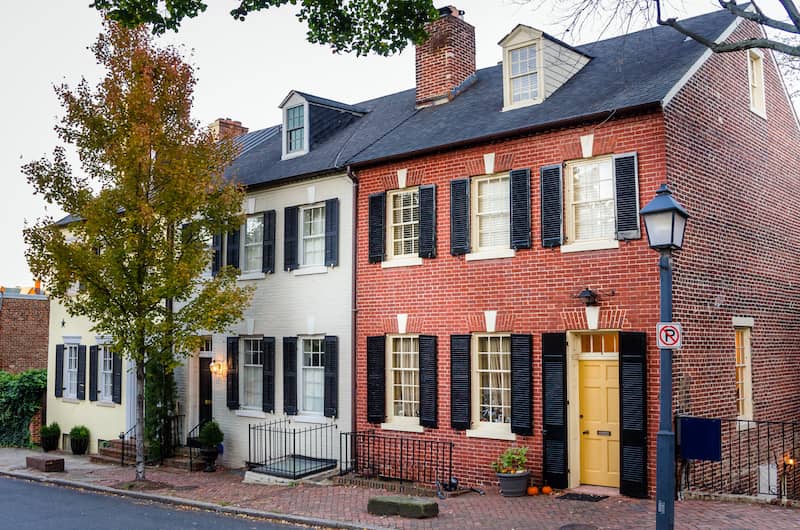
- Overall cost of living: 37.1% above U.S. average
- Median household income: $105,450
- Average home price: $937,623
- Average monthly rent: $2,357
- Unemployment rate: 3.1%
- Poverty rate: 9.6%
- Cost of a half-gallon of milk: $2.55
Alexandria sits just south of Arlington and just across the Potomac River from Washington, D.C. Many people who work in D.C. choose to live in Alexandria. And while it’s more affordable than its neighbor across the river, commuters will also have to brave a commute that can take up to an hour.
Alexandria is famous for its Old Town, where the buildings and brick sidewalks are straight out of the 18th and 19th centuries. This and other amenities make it a popular place to live and visit.
Alexandria residents have no shortage of jobs available nearby. Government jobs are readily available both in Alexandria and across the river. As a result, the median household income is nearly $35,000 higher than the national average. There’s a trade-off, of course, as median home and rent prices are considerably higher.
The Bottom Line: Cost Of Living Makes Life In These Cities Challenging
When you’re deciding on the next city you’ll call home, it’s important to consider the cost of living and how that compares to your annual income.
The cities on our list are some of the most expensive in the country to live in, and they have costs of living considerably higher than what most Americans are likely used to. A move to one of these cities can be a bit of a shock and put additional pressure on your budget, so it’s important to factor this in before you move.
Of course, these cities all have unique benefits to offer. When you learn about those benefits, it’s easy to see why so many people are willing to pay the higher living costs to call those cities home.
Take the first step to buy a home.
Quicken Loans® lets you get to house hunting sooner.
How We Created This List: Our Methodology
Each city was ranked based on how much the overall cost of living was over the national average index, which was set to 100. For example, Manhattan’s overall cost of living index is 227.7, which is 127.7% over the national average and the highest on our list.
The following sources were used to find the metrics for city and national averages:
Metric | Level | Source |
|---|---|---|
Overall Cost Of Living Index | Metro | Cost of Living Index, Council for Community and Economic Research, 2022 Annual Average |
Median household income | National, Metro | Current Population Survey, 2021 and 2022, Census.gov |
Average home price | National, Metro | Cost of Living Index, Council for Community and Economic Research, 2022 Annual Average |
Average monthly rent | National, Metro | Cost of Living Index, Council for Community and Economic Research, 2022 Annual Average |
Unemployment rate | National, Metro | Bureau of Labor and Statistics, December 2022 report |
Poverty rate | National, Metro | Current Population Survey, 2021 and 2022, Census.gov |
Cost of half-gallon of milk, overall cost of living and all average costs including gas and utilities | National, Metro | Cost of Living Index, Council for Community and Economic Research, 2022 Annual Average |

Erin Gobler
Erin Gobler is a freelance personal finance expert and writer who has been publishing content online for nearly a decade. She specializes in financial topics like mortgages, investing and credit cards. Erin's work has appeared in publications like Fox Business, NextAdvisor, Credit Karma and more.





